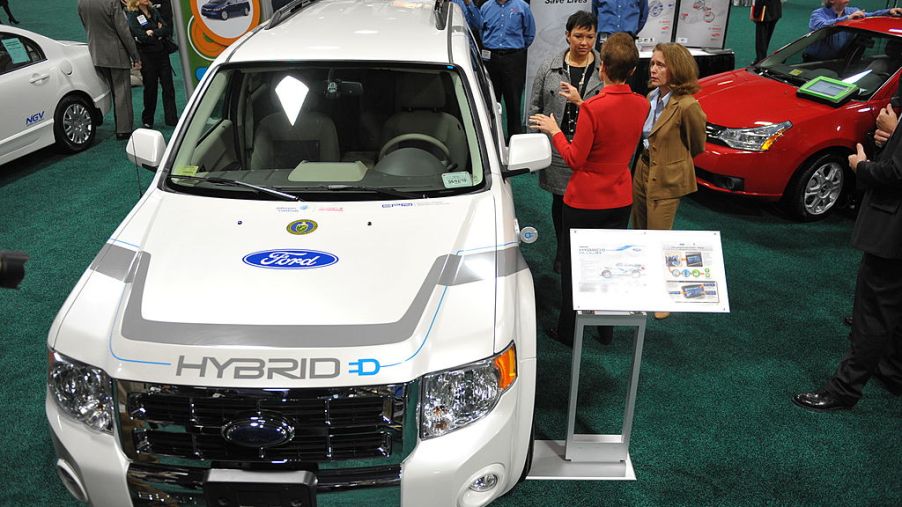
The 2020 Ford Escape Plug-In Hybrid Breaks New Fuel Efficiency Ground
The average fuel economy in cars has been rising steadily, and in the far future, most cars may be fully electric. In the meanwhile though, most Americans will be buying cars that run on gas or diesel, and these cars aren’t very fuel-efficient. However, with the 2020 Ford Escape Plug-in Hybrid, Ford has pushed the boundaries of what hybrids can do.
The Ford Escape Plug-In Hybrid breaks new ground
As MotorTrend wrote, the new Escape can come with a 2.5-liter four-cylinder hybrid engine that has a 14.4-kWh battery pack attached to it. This hybrid option for the Escape is available on almost every trim of the car, with the exceptions of the S and SE Sport trims. This option also costs roughly $5,000, though there are some price differences depending on the trim of the Escape.
That said, MotorTrend reported that the Escape’s hybrid engine gives it a fuel economy of 100 MPGe in the EPA’s tests. While the Escape isn’t the first car to hit 100 MPGe, it is the first SUV in its segment to hit that milestone.
This is important, since, while fuel economy is important for SUV owners, so is everything else that an SUV is good for. Many fuel-efficient cars tend to be small, but the Escape has plenty of room for people and activities.
Comparing the Ford Escape Hybrid to its competitors
One of the Escape’s biggest competitors in the segment is the Toyota RAV4 Prime, which shares a lot of similar features and specs with the Escape. For example, both SUVs have a 14.4-kWh battery pack, but the RAV4 gets about 2 miles more than the Escape does when both cars are on battery-only mode.
That said, in terms of their fuel economies, the Escape has the upper hand. MotorTrend said that the RAV4 gets about 94 MPGe, which, while good, is significantly less than what the Escape gets. But Toyota may get the last laugh.
The Escape only hits 100 MPGe with front-wheel drive, while the RAV4 comes with all-wheel drive as standard. All-wheel drive is very useful for SUV owners, so the RAV4 is better in that aspect.
While it’s a close fight between the RAV4 and the Escape, the Escape is miles ahead of its other competitors. For example, MotorTrend said that the Mitsubishi Outlander PHEV only gets 74 MPGe, and the Subaru Crosstrek gets 90 MPGe. With that said, two other cars had a higher MPGe than the Escape, but they weren’t in the Escape’s segment.
MotorTrend said that the Hyundai Ioniq got 119 MPGe, but the Ioniq is a sedan and not an SUV. The Kia Niro got 105 MPGe, and it’s technically an SUV. However, it’s so small that it’s also not comparable to the Escape.
How the Ford Escape gets such a high fuel economy
It’s very impressive that Ford and other automakers are pushing the fuel economies of its SUVs so high, but there are some asterisks. For example, the Escape PHEV won’t have all-wheel drive, and while that’s a good thing for its fuel economy, it’s a bad thing for anyone looking to go off-road with it.
Furthermore, MotorTrend said that the Escape and its competitors are getting those numbers when they’re being driven in a certain mode. That mode is the charge-depleting mode, and it’s different from the three other modes that the Escape can use.
With the charge-sustaining mode, for example, the Escape’s fuel economy drops to a combined 41 MPG, which is still very good. In fact, MotorTrend said that the Escape’s fuel economy with the charge-sustaining mode is higher than many of its competitors. The RAV4 gets 40 MPG, while the Honda CR-V Hybrid gets 38 MPG while running with this mode.



